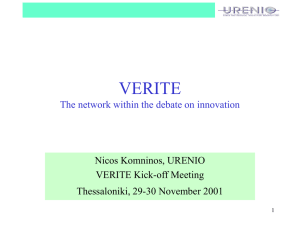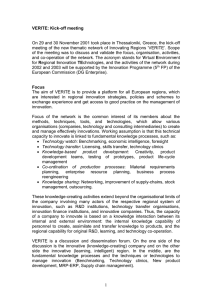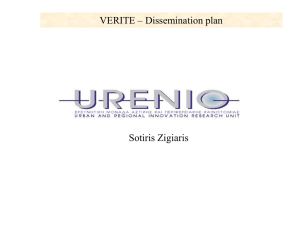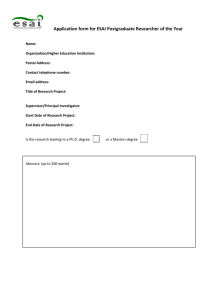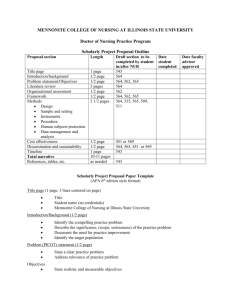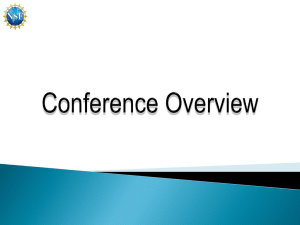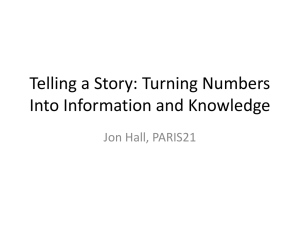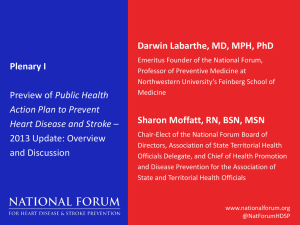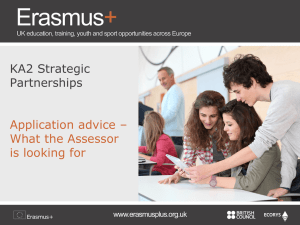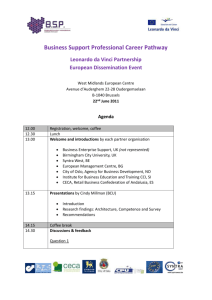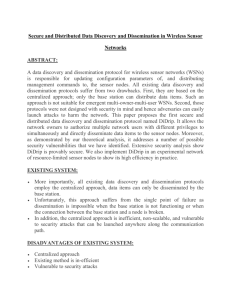Ten Elements of an Effective Dissemination Plan
advertisement
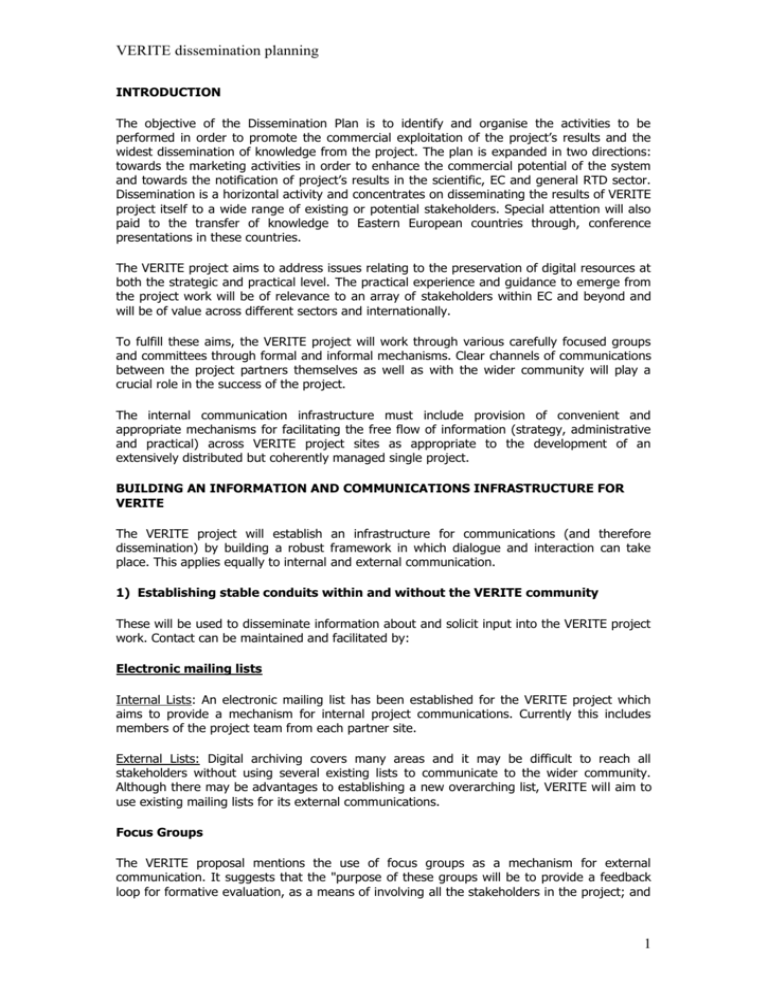
VERITE dissemination planning INTRODUCTION The objective of the Dissemination Plan is to identify and organise the activities to be performed in order to promote the commercial exploitation of the project’s results and the widest dissemination of knowledge from the project. The plan is expanded in two directions: towards the marketing activities in order to enhance the commercial potential of the system and towards the notification of project’s results in the scientific, EC and general RTD sector. Dissemination is a horizontal activity and concentrates on disseminating the results of VERITE project itself to a wide range of existing or potential stakeholders. Special attention will also paid to the transfer of knowledge to Eastern European countries through, conference presentations in these countries. The VERITE project aims to address issues relating to the preservation of digital resources at both the strategic and practical level. The practical experience and guidance to emerge from the project work will be of relevance to an array of stakeholders within EC and beyond and will be of value across different sectors and internationally. To fulfill these aims, the VERITE project will work through various carefully focused groups and committees through formal and informal mechanisms. Clear channels of communications between the project partners themselves as well as with the wider community will play a crucial role in the success of the project. The internal communication infrastructure must include provision of convenient and appropriate mechanisms for facilitating the free flow of information (strategy, administrative and practical) across VERITE project sites as appropriate to the development of an extensively distributed but coherently managed single project. BUILDING AN INFORMATION AND COMMUNICATIONS INFRASTRUCTURE FOR VERITE The VERITE project will establish an infrastructure for communications (and therefore dissemination) by building a robust framework in which dialogue and interaction can take place. This applies equally to internal and external communication. 1) Establishing stable conduits within and without the VERITE community These will be used to disseminate information about and solicit input into the VERITE project work. Contact can be maintained and facilitated by: Electronic mailing lists Internal Lists: An electronic mailing list has been established for the VERITE project which aims to provide a mechanism for internal project communications. Currently this includes members of the project team from each partner site. External Lists: Digital archiving covers many areas and it may be difficult to reach all stakeholders without using several existing lists to communicate to the wider community. Although there may be advantages to establishing a new overarching list, VERITE will aim to use existing mailing lists for its external communications. Focus Groups The VERITE proposal mentions the use of focus groups as a mechanism for external communication. It suggests that the "purpose of these groups will be to provide a feedback loop for formative evaluation, as a means of involving all the stakeholders in the project; and 1 VERITE dissemination planning as a means of communication and dissemination". Regular focus groups will be organised to solicit input from the wider VERITE community. Working Groups Similarly internal project working groups can be used to manage project work and provide and effective mechanism for formative project evaluation. The work of these groups will focus on specific practical issues. 2) Developing a publications programme At a minimum this will comprise: targeted informational literature designed to raise awareness about VERITE, and its activities instructional literature derived from experience across VERITE. Such literature may include: methodological guidelines strategic guides to good practice (including organisational and financial implications for SMEs 3) Developing effective mechanisms for disseminating material The worldwide web In addition to its use of electronic mailing lists, VERITE is currently establishing a web presence. The pages will include: information about VERITE and its activities including contact details, background information, working papers, events (seminars, workshops, conferences) etc. instructional materials as discussed above (the web in this respect acts as a principal means of publication); frequent news and updates to keep the community informed For internal communication, the web site may also be used by VERITE as the principal means of distributing administrative, policy, and procedural documents for use by members of VERITE. Where necessary, documents and sets of documents may be accommodated on password protected pages and thus made accessible to selected individuals and/or groups. Printed publications VERITE may wish to maintain printed copies of selected informational/publicity and/or instructional materials for distribution either freely or on a cost-recovery basis. Promoting dissemination, advocacy and other events Conferences, workshops, seminars will be organised by the VERITE projects to: raise awareness about VERITE activities, resources, etc.; act as training venues e.g. for disseminating instructional material as required by a particular stakeholding community or communities; act as fora for more public discussion of research, development, collections, standards, or other strategic and substantive issues of interest to VERITE and the wider community 2 VERITE dissemination planning In addition, VERITE hopes to supplement such events with those which attempt to address issues from an integrative, cross-sectoral, or horizontal perspective not necessarily available to any one of its stakeholder communities. Where appropriate VERITE hopes to work with other programmes and organisations on these type of events. Supported and Assisted Dissemination VERITE plans also to hold a series of dissemination events specifically aimed at SMEs towards the end of the project. This event (or series of events) will provide on-site support for institutions concerned about digital preservation and developing sensible long term strategies for access and preservation of electronic materials. The project will bring its knowledge and experience to these events as a way of providing support and hands-on assistance to SMEs within the context of their local situation. These may events may be based around the experience of the VERITE test-site libraries. COMMUNICATING WITH THE VERITE STAKEHOLDING COMMUNITIES VERITE will identify those communities which have a crucial stake in its activities and for each stakeholding community so identified, the project will: assess its communication needs (contributions and uses) of the VERITE project; identify the information and materials/resources necessary to maximise its use of and/or contribution to VERITE activities; evaluate where and into what VERITE activities, input may be most appropriately solicited from the community's members. The following groups have been identified as VERITE project stakeholders: 1. 2. 3. 4. 5. 6. Regional development officers Suppliers of digital information Management consultants National and regional information services SMEs managers Professional associations serving any of the communities listed above 3 VERITE dissemination planning Appendix A Ten Elements of an Effective Dissemination Plan After you have developed your dissemination policy statements, you are ready to turn your attention to more specific dissemination planning. Remember that your dissemination planning should start at the beginning of your research activities, not at the end. While some details of the dissemination effort will be suggested in your original proposal and refined as you progress through your research, your dissemination plan goals and objectives should be clarified at the beginning of your research project in consultation with your VERITE project officer. This approach will allow you to meet your dissemination challenge in a timely manner. 1. Goals: Determine and document the goals of your dissemination effort for your proposed project. 2. Objectives: Associate each goal with one or more objectives that clarifies what you are trying to accomplish through your dissemination activities. 3. Users: Describe the scope and characteristics of the "potential users" that your dissemination activities are designed to reach for each of your objectives. 4. Content: Identify, at least, the basic elements of the projected content you have to disseminate to each of the potential user groups identified. 5. Source(s): Identify the primary source or sources that each potential user group is already tied into or most respects as an information source. Consider ways to partner with these sources in your dissemination efforts. 6. Medium: Describe the medium or media through which the content of your message can best be best delivered to your potential users and describe the capabilities and resources that will be required of potential users to access the content for each medium to be used. 7. Success: Describe how you will know if your dissemination activities have been successful. If data is to be gathered, describe how, when, and who will gather it. 8. Access: Describe how you will promote access to your information and how you will archive information that may be requested at a later date. Consider that most people will use your project-related information when they perceive a need for it – not necessarily when you have completed your research project. 9. Availability: Identify strategies for promoting awareness of the availability of your research-based information and the availability of alternate available formats. 10. Barriers: Identify potential barriers that may interfere with the targeted users’ access or utilization of your information and develop actions to reduce these barriers. Possible Issues Related to Dissemination Strategizing User Groups Limited user readiness to change Widely divergent format and level of information needed Multiple levels of contextual information needed Less than clear relevance to own needs Variety of dissemination media preferred Limited number of information sources trusted Source Low level of perceived competence Limited credibility of experience Suspicion regarding motive Lack of sensitivity to user concerns Limited relationships to other sources trusted by users 4 VERITE dissemination planning Content Low confidence in quality of research and development methodology Limited credibility of outcomes Restricted comprehensiveness of outcomes Unclear utility and relevance for users Non-user friendly format Costs or equipment required to access Lack of statistical power in research design, procedures, and data analyses Context Limited applicability to current issues in the field Competing knowledge or products General economic climate and circumstances Lack of relationship between outcomes and existing personal knowledge or products Medium Limited physical capacity to reach intended users Long timeframes required to access Unclear accessibility and ease of use Lack of flexibility Limited reliability Cost effectiveness Limited clarity and attractiveness of the information "package" Training Events and Product Development Dissemination planning provides an opportunity for dissemination goals, strategies, and activities to be conceptualized and carefully considered. In your planning process, it is important to remember that training events, such as: conferences, workshops, academic courses, meetings, computer-based discussion lists, and products, such as: reports, journal articles, video tapes, newsletters, and websites are primary tools that may or may not help you reach your dissemination goals with certain target audiences. A thoughtful dissemination plan allows you to move beyond the simple listing of events and products as your dissemination strategy. The most effective dissemination outreach efforts are not designed in broad-brush fashion to equally reach any and all of your designated target audiences through a single training event or product. 5
